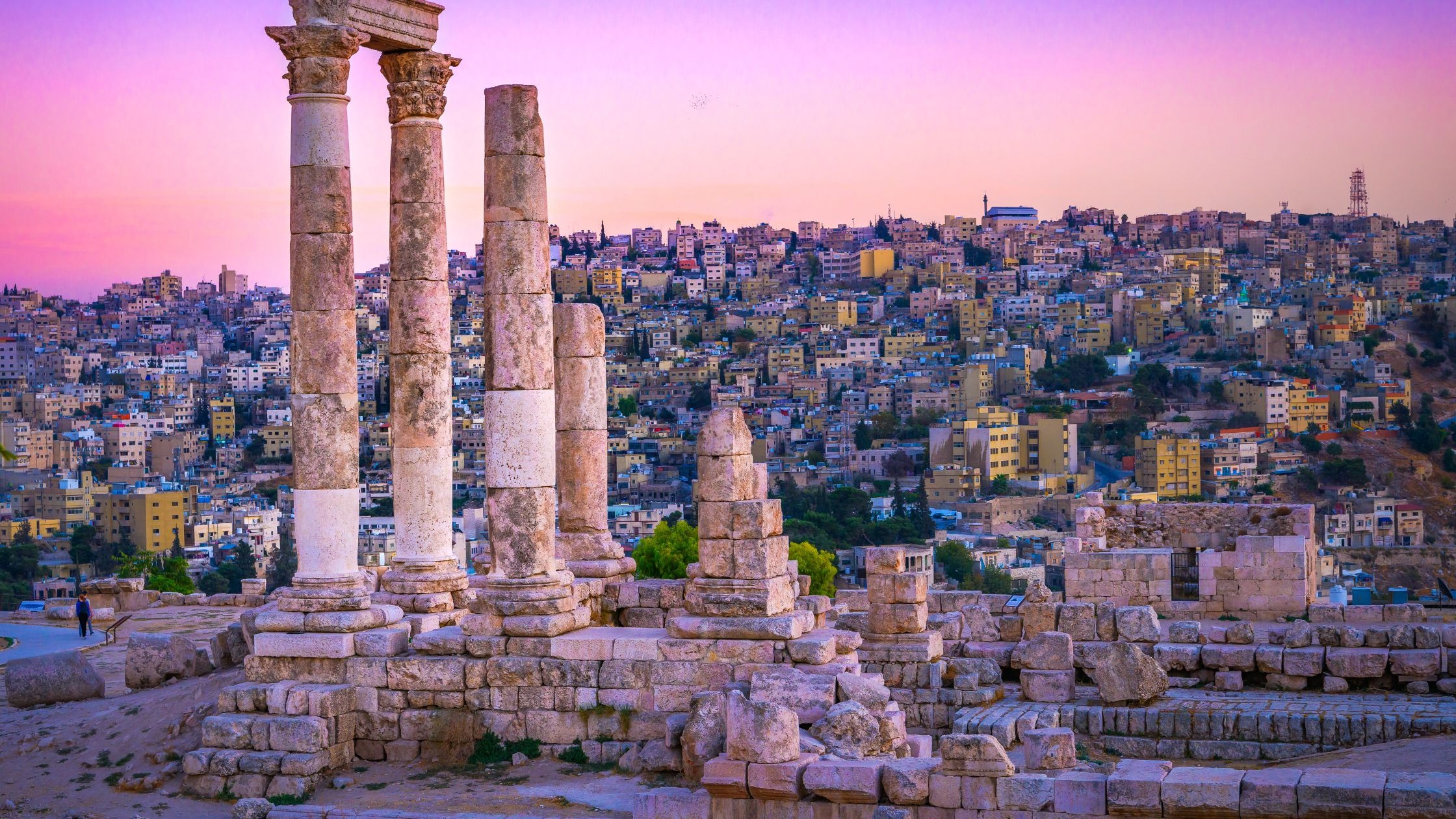
Jordan, officially known as the Hashemite Kingdom of Jordan, is a land rich in history, culture, and natural beauty. Nestled in the heart of the Middle East, Jordan offers a unique blend of ancient traditions and modern progress. From its awe-inspiring landmarks to its thriving cities, Jordan is a destination that attracts tourists and historians alike. This article delves into the diverse aspects of Jordan, including its geographical setting, historical heritage, modern development, and cultural significance.
Geography and Location
Jordan occupies an area of approximately 96,188 square kilometers (37,673 square miles), making it roughly the same size as Austria or Portugal. Located in the Middle East, it shares borders with Syria to the north, Iraq to the east, Saudi Arabia to the south and southeast, and Israel and the Palestinian territories to the west. The country’s only access to the sea is through the Gulf of Aqaba, located in the south.
Jordan’s geography is diverse, featuring desert landscapes, fertile valleys, and highlands. The northern and central regions, including the Jordan Valley, have received enough rainfall to support agriculture and large populations. These areas have historically been home to the majority of Jordan’s inhabitants, with farming communities establishing themselves in these fertile lands. The country’s famous landmark, the Dead Sea, lies on the border between Jordan and Israel, and is one of the lowest points on Earth.
Climate and Environment
Jordan’s climate is primarily arid, with hot, dry summers and mild, rainy winters. The climate varies across the country, with the highland areas in the north experiencing a Mediterranean climate, while the south and east are more desert-like. The Jordan Valley, being a lowland, tends to have a warmer and more humid climate, which makes it suitable for agriculture.
The Dead Sea, a remarkable natural phenomenon, is a major environmental feature. It is a saltwater lake that is famous for its high salt content, which allows people to float effortlessly on the water’s surface. The mud of the Dead Sea is known for its therapeutic properties, and many visitors travel to Jordan to enjoy the health benefits it offers.
History and Ancient Civilizations
Jordan’s history stretches back thousands of years, and the country is home to some of the world’s most significant archaeological sites. The ancient city of Petra, one of the New Seven Wonders of the World, is perhaps the most famous landmark in Jordan. Petra was once the thriving capital of the Nabatean Kingdom and was carved into the rose-red cliffs of southern Jordan. It remained a secret for centuries until its rediscovery by Swiss explorer Johann Ludwig Burckhardt in 1812.
Petra is just one of many historical sites in Jordan. The ancient Roman city of Jerash, with its well-preserved ruins, is another testament to the country’s rich history. The city boasts impressive columns, temples, and a large amphitheater, making it one of the best-preserved Roman cities in the world. Other significant sites include the Roman ruins of Umm Qais, the Crusader Castle at Karak, and the historic Madaba, which is known for its Byzantine-era mosaics, including the famous Madaba Map, a 6th-century mosaic map of the Holy Land.
The Dead Sea and Natural Wonders
Jordan’s most unique natural landmark, the Dead Sea, is renowned for its therapeutic properties. The mineral-rich waters are believed to have healing effects on the skin and joints, making it a popular destination for wellness tourism. Visitors flock to the shores of the Dead Sea to experience the sensation of floating effortlessly on its salty waters, a phenomenon that cannot be found elsewhere on Earth.
In addition to the Dead Sea, Jordan is home to a variety of other natural attractions, such as Wadi Rum. Known as the “Valley of the Moon,” Wadi Rum is a desert wilderness in southern Jordan that features towering sandstone mountains and narrow canyons. It has served as the backdrop for numerous films, including Lawrence of Arabia. Hiking, rock climbing, and jeep tours are popular activities in this awe-inspiring desert landscape.
Modern Jordan and Urban Development
Jordan has undergone significant modernization in recent decades. Amman, the capital and largest city, is a vibrant metropolis that blends modern architecture with historical charm. The city’s skyline is dotted with glass-and-steel skyscrapers, but it is also home to ancient ruins such as the Citadel, which offers a panoramic view of the city. Amman is the cultural, political, and economic heart of Jordan and a symbol of the country’s progress.
Other cities in Jordan, such as Aqaba, the country’s only coastal city, and Irbid, an important educational and cultural center, have also experienced significant growth. Jordan’s commitment to development is evident in its growing infrastructure, which includes modern highways, new residential areas, and shopping malls that cater to both locals and international visitors.
Culture and Hospitality
Jordan is renowned for its hospitality, with locals known for their kindness and generosity toward visitors. Traditional Arabic values are at the heart of Jordanian society, and respect for family, community, and religion plays a significant role in everyday life. The Bedouin culture, in particular, is an integral part of Jordan’s heritage, with its distinct customs, music, and crafts continuing to be celebrated across the country.
Jordan’s cuisine is also an important aspect of its cultural identity. Traditional dishes such as mansaf (a lamb and rice dish), maqluba (a rice and vegetable casserole), and falafel (fried chickpea balls) are enjoyed by locals and visitors alike. The country’s food is a reflection of its diverse heritage, with influences from the Levant, the Arabian Peninsula, and beyond.
Tourism and Economic Impact
Tourism plays a crucial role in Jordan’s economy. The country’s rich archaeological sites, natural wonders, and cultural heritage draw millions of visitors every year. Petra, the Dead Sea, and Wadi Rum are just a few of the major attractions that bring tourists from around the globe. Additionally, Jordan’s historical significance as a crossroads of civilizations adds to its allure as a tourist destination.
Jordan’s tourism sector supports a wide range of businesses, from hotels and restaurants to tour operators and transportation services. The government has worked to improve tourism infrastructure and promote Jordan as a safe and attractive destination in the region. The stability and security of Jordan have made it a top choice for travelers looking to explore the Middle East.
Conclusion
Jordan is a country where ancient history and modern development coexist in harmony. From the mystical city of Petra to the therapeutic waters of the Dead Sea, Jordan offers visitors a unique blend of culture, heritage, and natural beauty. The country’s strong tradition of hospitality, its vibrant cities, and its wealth of archaeological treasures make it one of the most fascinating destinations in the Middle East. Whether you are a history enthusiast, a nature lover, or a cultural explorer, Jordan promises an unforgettable experience.





